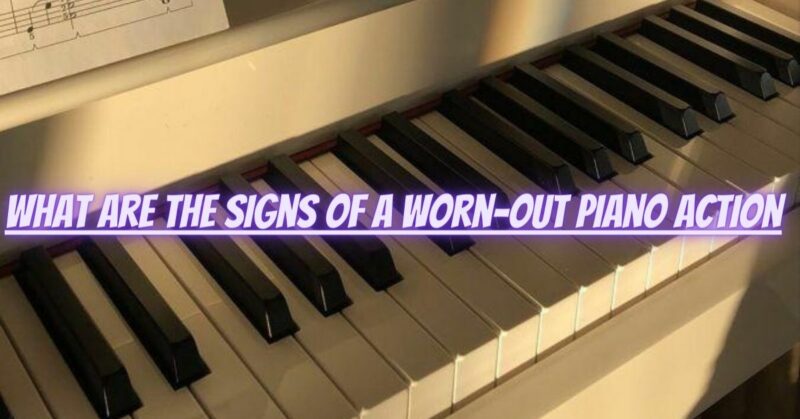A piano action consists of numerous moving parts that experience wear and tear over time due to regular use. As a result, the action may become less responsive, affecting the playability and overall performance of the piano. Here are some common signs that indicate a worn-out piano action:
1. Sluggish Keys: Sluggish or slow keys are a clear indication of a worn-out action. When you press a key, it may take longer to return to its resting position, affecting the speed and accuracy of your playing.
2. Uneven Key Response: Worn-out action can lead to uneven key responses, where some keys feel heavier or lighter than others. This inconsistency affects your ability to control dynamics and expression while playing.
3. Double Striking: A worn-out action may cause keys to “double strike,” where a single keystroke produces two or more notes. This issue can make playing difficult passages or fast pieces nearly impossible.
4. Inconsistent Tone: As the action wears out, the felt on the hammers can become compacted or grooved, resulting in inconsistent tone production across different keys.
5. Reduced Dynamic Range: A worn-out action may limit the piano’s ability to produce a wide range of dynamics. The keys may feel unresponsive and lack the ability to produce soft pianissimos or loud fortissimos.
6. Excessive Noise: Worn-out action parts can cause clicking, squeaking, or rattling noises when playing, which can be distracting and affect the overall sound quality.
7. Difficulty with Repetition: In a well-regulated piano action, keys should return to their resting position quickly, allowing for rapid and accurate repetition. A worn-out action may impede this rapid repetition capability.
8. Loss of Expressiveness: A worn-out action can make it challenging to achieve the level of expressiveness and control that you desire in your playing. This loss of responsiveness can be frustrating for pianists.
9. Hammer Grooves: Over time, the hammers’ striking surfaces may develop grooves or indentations due to repetitive contact with the strings. This can affect tone quality and result in uneven key responses.
10. Key Clicking: Worn-out action parts, especially the repetition levers, can cause clicking sounds when keys are released.
11. Visible Wear on Action Components: Upon inspection, you may notice visible signs of wear on the action components, such as hammers, repetition levers, or knuckles.
If you observe any of these signs in your piano, it’s crucial to have it inspected and regulated by a qualified piano technician. Regular maintenance and action regulation can extend the life of your piano action and ensure optimal performance, allowing you to continue enjoying the instrument’s beautiful sound and playability for years to come.


